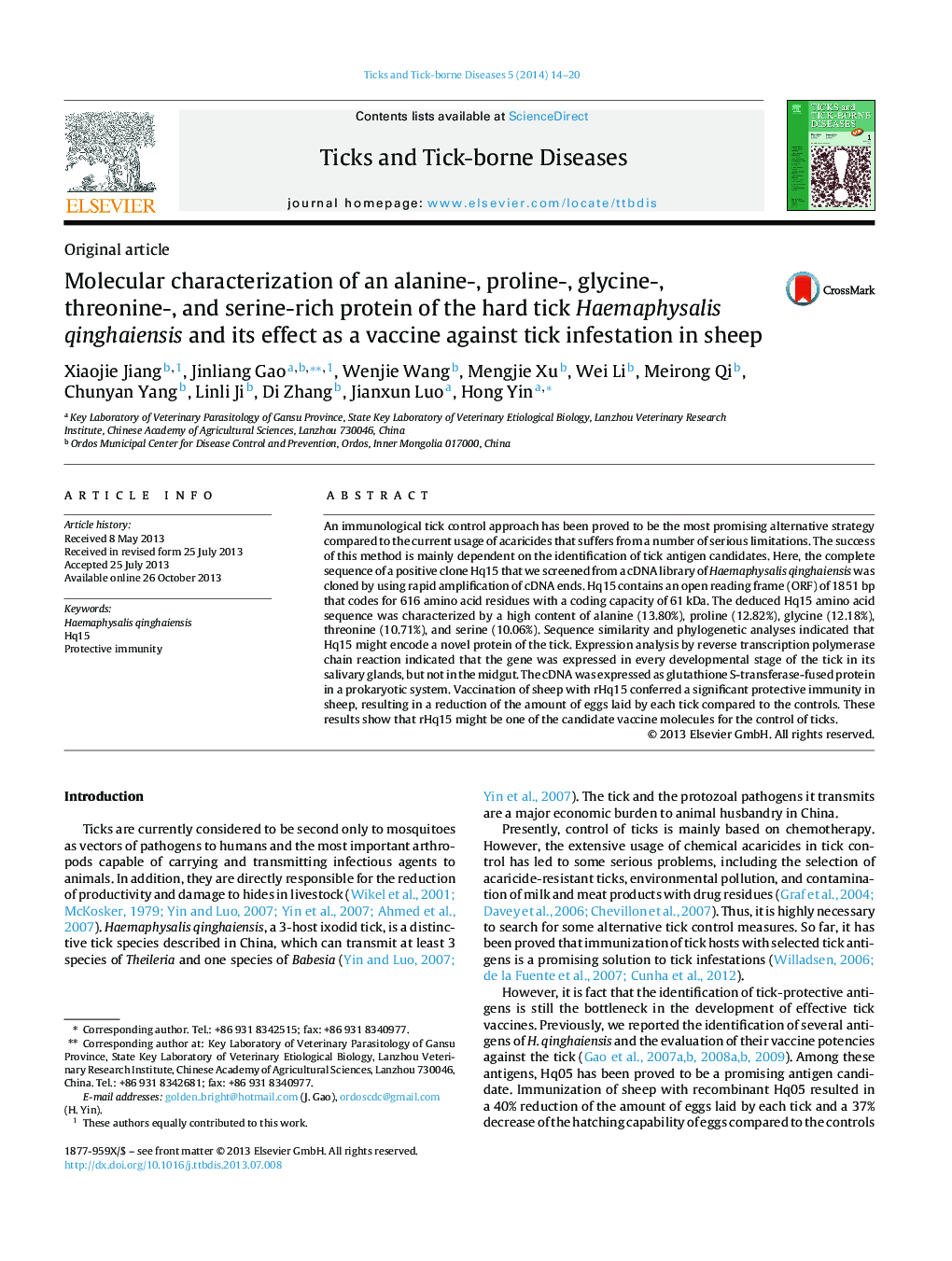| Article ID | Journal | Published Year | Pages | File Type |
|---|---|---|---|---|
| 2474116 | Ticks and Tick-borne Diseases | 2014 | 7 Pages |
An immunological tick control approach has been proved to be the most promising alternative strategy compared to the current usage of acaricides that suffers from a number of serious limitations. The success of this method is mainly dependent on the identification of tick antigen candidates. Here, the complete sequence of a positive clone Hq15 that we screened from a cDNA library of Haemaphysalis qinghaiensis was cloned by using rapid amplification of cDNA ends. Hq15 contains an open reading frame (ORF) of 1851 bp that codes for 616 amino acid residues with a coding capacity of 61 kDa. The deduced Hq15 amino acid sequence was characterized by a high content of alanine (13.80%), proline (12.82%), glycine (12.18%), threonine (10.71%), and serine (10.06%). Sequence similarity and phylogenetic analyses indicated that Hq15 might encode a novel protein of the tick. Expression analysis by reverse transcription polymerase chain reaction indicated that the gene was expressed in every developmental stage of the tick in its salivary glands, but not in the midgut. The cDNA was expressed as glutathione S-transferase-fused protein in a prokaryotic system. Vaccination of sheep with rHq15 conferred a significant protective immunity in sheep, resulting in a reduction of the amount of eggs laid by each tick compared to the controls. These results show that rHq15 might be one of the candidate vaccine molecules for the control of ticks.
